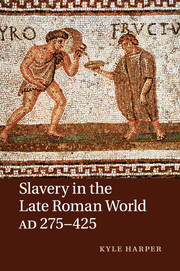After the fall: Roman slavery and the end of antiquity
Published online by Cambridge University Press: 05 August 2011
Summary
SLAVERY AMIDST THE RUINS
By the end of the sixth century, Gregory the Great, bishop of Rome, was firmly convinced that the last days were at hand. Gregory had just lived through a miserable decade. He had been installed as pope in 590, amidst terrible floods that spawned a vicious sequence of famine and plague, all harrowingly attested in the sources. Plague had become endemic in the Mediterranean, flaring into crisis every decade or two. Gregory was born about the time the plague first arrived. As a Roman who had lived through the advent of this disease, who had seen firsthand the seemingly endless cycle of wars between Ostrogoths, Byzantines, and Lombards, he might well have believed he was living in the end times. Gregory's Rome was, compared even to its relatively recent past, in lamentable shape, irreversibly on course to become little more than an ecclesiastical museum. Within a few decades, Rome would reach its absolute nadir, cut off from all but the most rudimentary circuits of seaborne trade. Its population was only one-tenth its late Roman size, and the city's material culture was incomparably poorer, for rich and humble alike. Rome had fallen.
The author of the Biblical Revelation, writing at the very zenith of Roman power, had imagined that when the Eternal City was destroyed, slave merchants, who traded in the bodies and souls of men, would weep in mourning. Yet the fall of Rome did not witness the end of slavery.
- Type
- Chapter
- Information
- Slavery in the Late Roman World, AD 275–425 , pp. 497 - 510Publisher: Cambridge University PressPrint publication year: 2011

